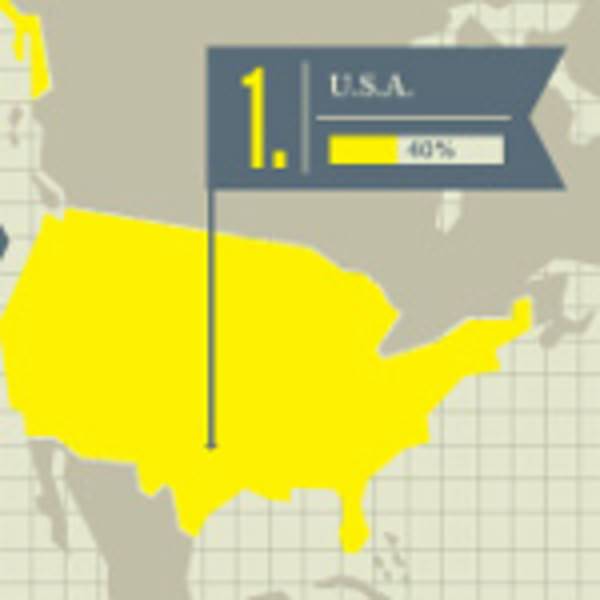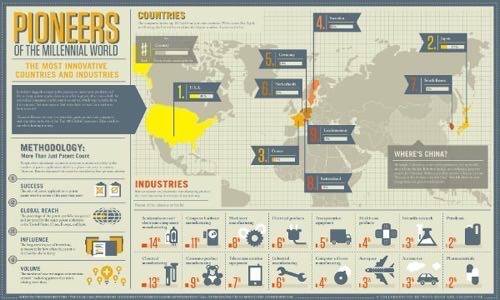Measuring an intangible like “most innovative” is tricky, at best. At worst, it’s a complete disaster, like measuring “most innovative” by using patents as a measure, like this infographic from Good and Column Five Media.

It’s based on Top 100 Global Innovators, which uses the Derwent World Patents Index and looks at patent-related criteria.
This doesn’t just use patent volume, but also looks at success in patents granted (as opposed to just patents applied for), global patents (applied for in more than one country) and the “influence” of a patent. (That is, how often it’s cited.)
Criteria You Could Use
According to the infographic, the software industry accounts for just 4% of this and the computer hardware manufacturing industry holds 11%. The “semiconductor and electronic component manufacturing” industry holds 14%.

My general disdain for software patents doesn’t automatically apply to other industries, but I still feel that conflating innovation and patents is a really bad idea. If you really feel a deep-seated need to measure innovation, how about looking at a broader field?
For example, this does nothing to measure publications that are unrelated to patents. Look at the COPS paper by researchers from Princeton University, Intel Labs, and Carnegie Mellon University. A lot of the innovation in the software industry, particularly that which happens in the open source areas, isn’t patented.
It also fails to distinguish between patents and application. So what if a company applies for a patent then sits on it? What matters is what you ship. The trolls that file patents and then wait for others to ship are a measure of anti-innovation. (If accurately tallied, I’m sad to say that the United States would be dinged severely for anti-innovation patents and patent use.)
I’m not entirely convinced you can accurately measure innovation by any means, but you certainly can’t get there strictly by measuring patents.





















